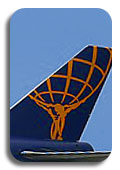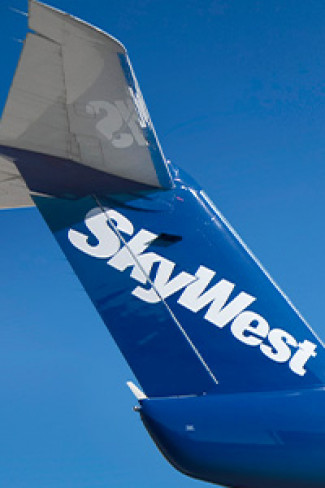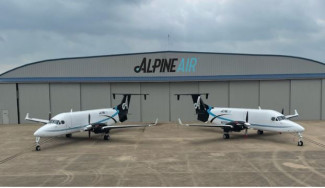Ground School 101 - Part One
Young men and women huddle in small groups, each chattering with barely held excitement. Boasts of aviation valor and masterful flying skills are tempered with humble stories of benign days flight instructing. Who has flown what? Where is the wildest you have flown into? How much turbine time do you have? The chatter goes on for a few more minutes until the door slams shut, heads whip around and the instructor launches into the class. Standing ramrod straight, thinning hair combed over the top of a well tanned dome, deep wrinkles cut into a weathered face, the man spits a slug of chewing tobacco into a small paper cup. Welcome to Slingblade Airlines, people. My name is Jack Smith and I am your ground instructor. And with that, your aviation career has begun in earnest.
Your first few days of ground school are long and dizzying. Regulations that you once memorized for flight instructing and cargo are now being crushed under the weight of additional regulations that you must know inside and out. The instructor may be one of the colorful few, regaling you with tales like the time he was forced to jam his full arm out the cockpit window at 200 kts to hold the wing on after the spars detached, all while hemorrhaging fuel, on an approach to minimums with an 88 kt gusting crosswind and a comatose first officer bleeding profusely from accidentally jamming a hotel pen into his femoral artery during the rough ride. Or, if lady luck left you at the bar the night before, he or she may be one of the human Dow Jones computer types, unleashing a steady stream of monotonous jabber in which you are supposed to strain out all the information you'll need to pass. Either way, you are finally occupying a seat at an airline and they are actually paying you to learn all of this information.
The usual flow of ground school runs like a meandering river, a few areas of pooling where you can catch up, and a few violent rapids, where you are gulping to figure out what happened yesterday in today's class. Indoctrination, or indoc, is usually the first step. The airline has a way of doing things and expects you to follow those rules. They have set forth policies, such as no dangling feather earrings on men or no leather uniform pants for the ladies, that promote an image they want to convey to the flying public. There will be lectures on sexual harassment, job descriptions, management structure and a vast array of other topics. The airlines union will get in with a hearty lunch of pizza and soda to present their function and terms as well. These are the core of the company and relate to your job on a day to day operation.
With a firm grip of understanding the basics the company expects of you, the next class will be the general operation manual, or GOM class. Here, you will have a variety of mind numbing formulas and general regulations that you will use on a some what regular basis. There will be deriving minimums and alternates, and other wildly exciting topics, such as rest requirements and duty times, along with the odd, 2 page long algorithmic formula that allows you to compute your rest requirements after a duty day. There will also be more regulations, many of which, in your zeal to impress the ground school instructor, you may have began memorizing during one of your students 264 cross country adventures to the nearest airport you could find. This usually lasts a few days, and by this time, you are ready to bend metal beams around your skull to keep your brain inside it. It can be long and tedious, this ground school stuff, but there will be a time when it comes in handy. To help keep you somewhat focused, a taste of the brass ring is usually bestowed upon you by now in the form of aircraft assignments. That gleaming jet, hellion of the skies in her feisty paint job and rear mounted turbine engines, has your name on it, and with every passing moment of babbling about duty times and regulations, your dream of pushing those thrust levers to the firewall and blasting off into the mighty flight levels above gets closer.
The finale of indoc and GOM are usually a test. You are required to demonstrate that you haven't memory dumped all of the information that has been ladled into your cranium. These are usually done on a Friday with the idea of getting a few days off to get some studying for the next bout of mental battery. Once done, it is on to systems, where you become something akin to a medical examiner of airplanes, digging deep into engines and air conditioning, gently fondling the delicate electric paths that the AC and DC busses use to power your turbine driven ride. It will be a long 1-3 weeks there, with loads of information. The stress of systems can be greatly eased by taking the spare 1 minute and 37 seconds you have in a day, after 4 hours of sleep, 9 hours of class, 6 hours of study, 3 hours of deep, reflective prayer for help and 1 hour, 48 minutes and 23 seconds of copious coffee drinking, and studying the limitations and memory items that will be covered there.
Systems class is where the drinking water from a fire hose more than likely came from. Temperatures and limitations are machine gunned at you, along with various pressures and speeds. What if?, where's? and how's? are lobbed like grenades, everyone scattering at the sheer terror of answering the question wrong and earning smug looks from other students whose hands seem paralyzed at the exact instant a question is asked. The intimate parts of the airplane are ruthlessly dissected. You become the molecule of air that is jammed into the engine, compressed, torched, expanded, driven into an anti ice tube or air conditioning unit and finally inhaled gently by the passengers sitting behind you in the cabin. You are the bus tie contactor, stoically watching for transients and fluctuations, jealously guarding the bus and keeping her safe. The gear, the flaps, the exquisite LCD displays and the computers feeding them those pretty colored symbols, those are all you. The information is crammed deep into your head, the numbers and limits blurred as if de-ice fluid was hitting them on sheets of paper. This is what will get you to a point of comfort when flying the plane during an emergency. You are learning the architecture of the plane so that when a problem arises, your knowledge of its systems will help get you to an expeditious resolution. The United States Navy SeALs have a saying on Coronado, where most of their early training is done: The only easy day was yesterday. That could easily apply to systems.
Next week, it's into the simulator.
-

Airshare 07/22/2024
-
Alpine Air 07/18/2024
-

Atlas Air 07/17/2024
-

Piedmont Airlines 07/10/2024
-

SkyWest 07/09/2024
 AIRLINE PILOT CENTRAL
AIRLINE PILOT CENTRAL